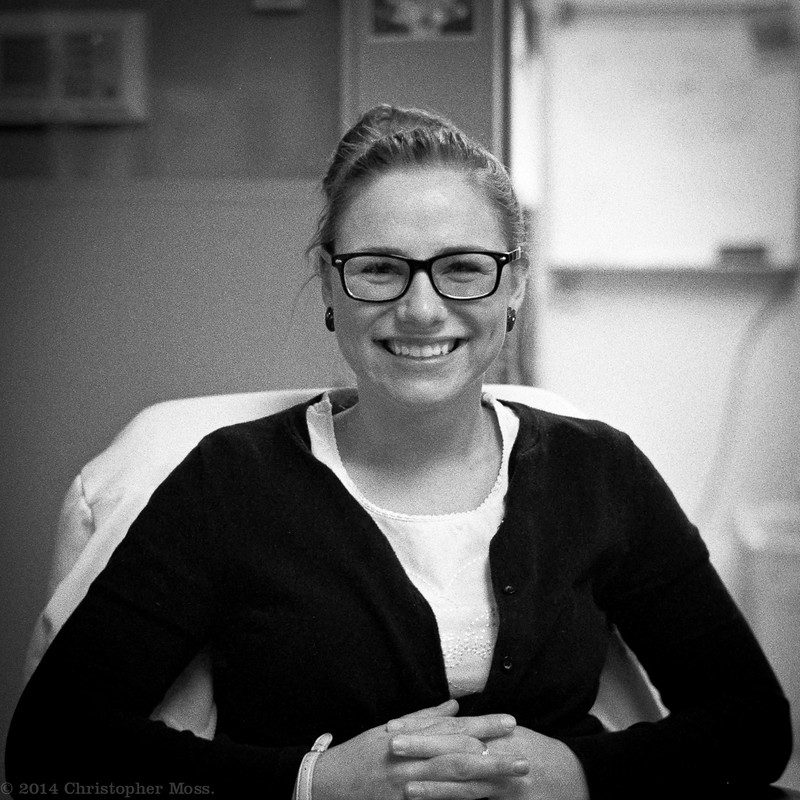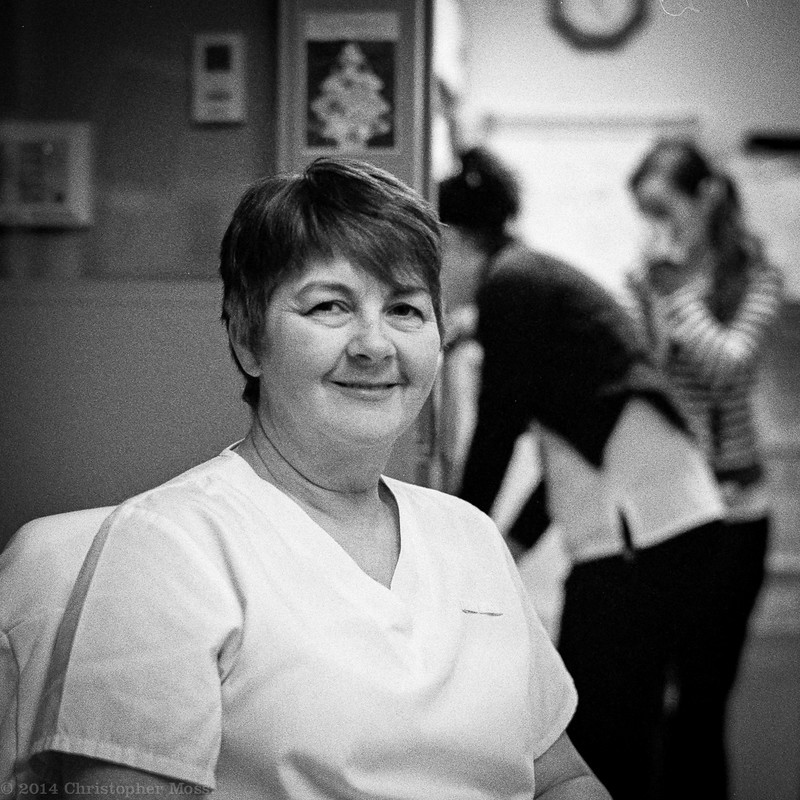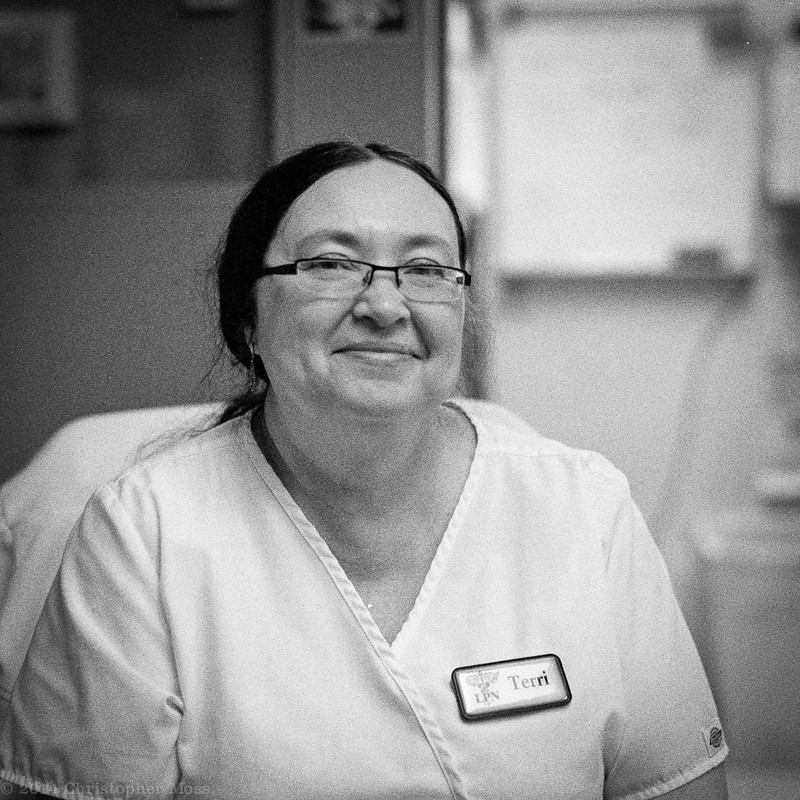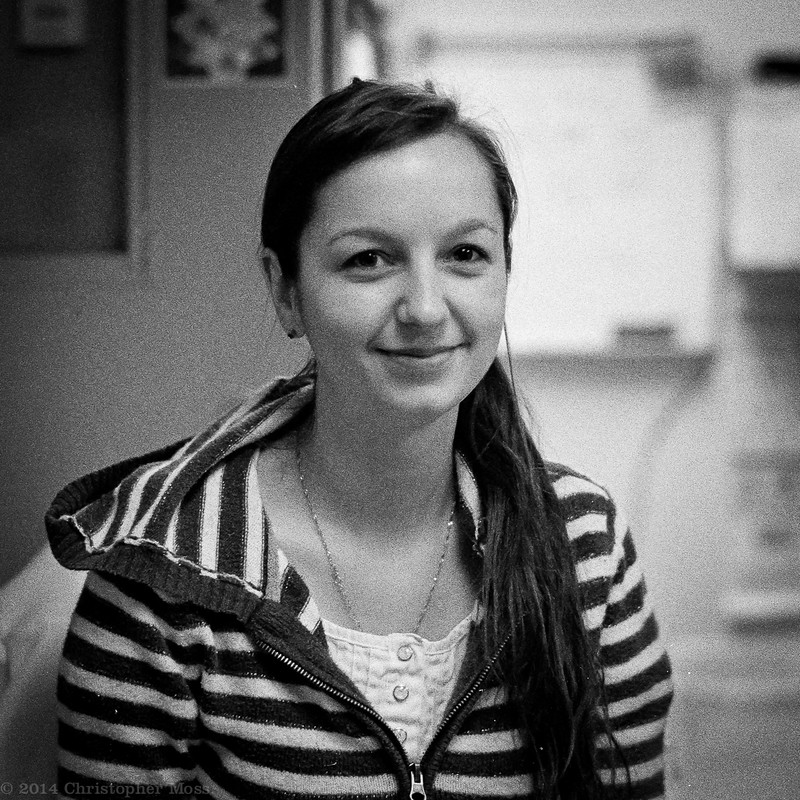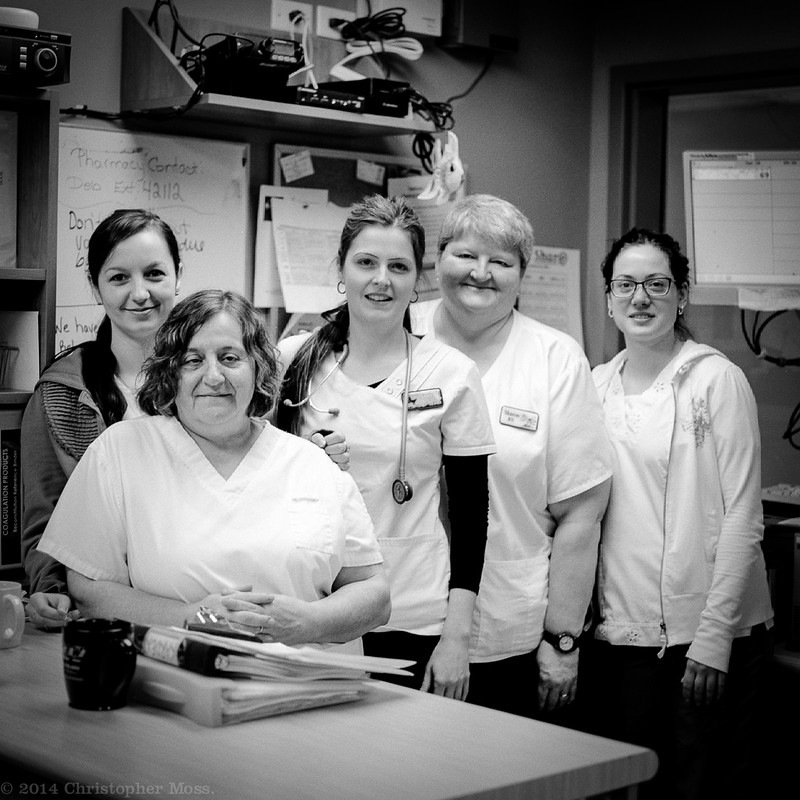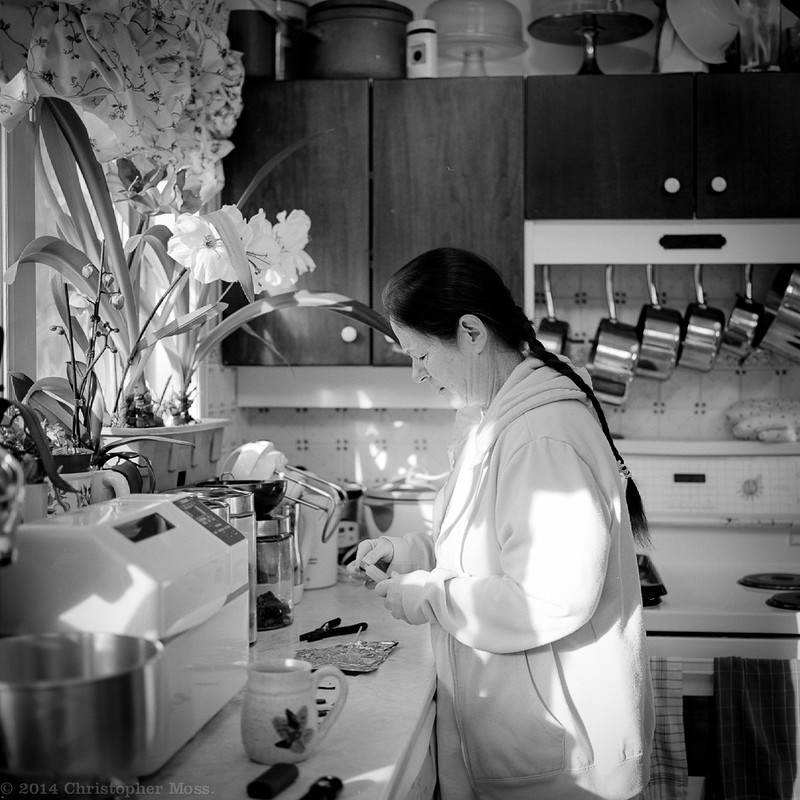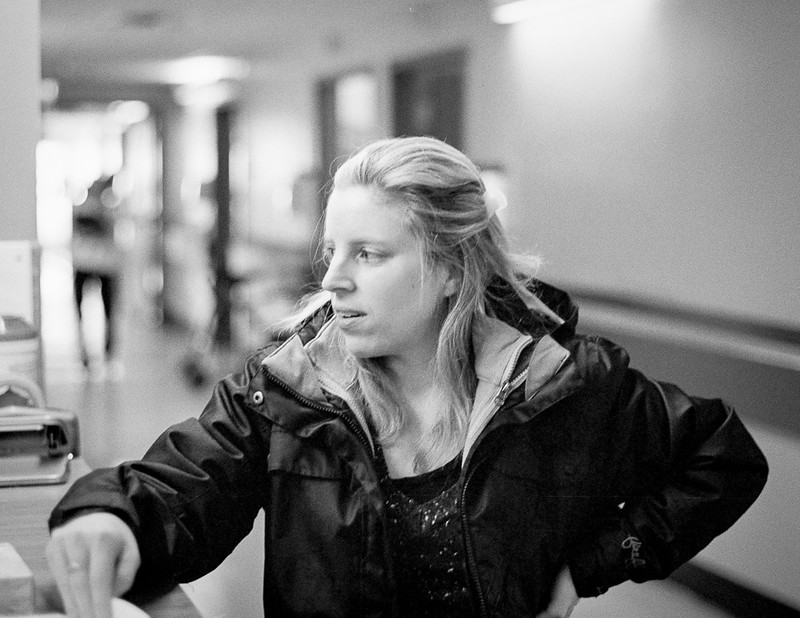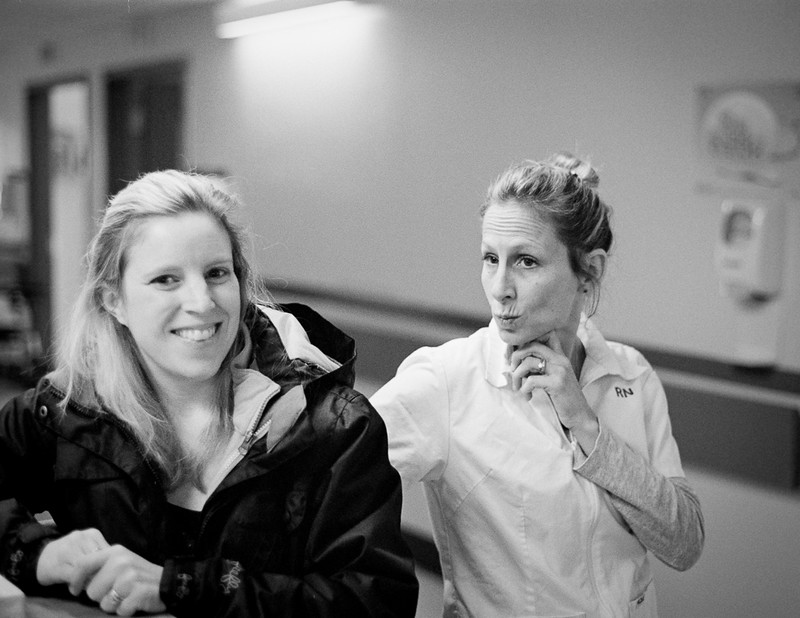I tried something new for me today. Stand development entails using extremely dilute developer that has just enough reagent in it to develop one film and no more. Then you leave the film in it for a prolonged period with no agitation at all. Why? Remember film has light sensitive silver halides in the emulsion. These are chemically changed by exposure to light, and the more light the more the silver halide is changed to clumps of metallic silver. A developer amplifies the metallic silver from as little as four atoms to billions in each cluster. The more silver, the darker that part of the negative, and the lighter it will be in the positive print that will be made from it. So highlights have lots of silver and develop quickly, but shadow areas have little light exposure, little silver in consequence and will take more development to show any detail that might be there. How to get things right for both highlights and shadows? One way is stand development. The solution of developer sits stagnant against the film emulsion, and is quickly exhausted where it is adjacent to a highlight, but without agitation, no new developer moves in to over-develop these areas. Conversely, next to a shadowy part of the film the developer can take the whole prolonged developing time to bring out as much detail as possible without the risk of 'blowing out' the highlights, which would result in them being pure white with no detail in the final print. Normal methods of development involve concentrated developer, much agitation to keep fresh reagent next to the film, and precise timing that may be rather short and hurried. If the negative is perfectly exposed, and the scene it recorded isn't overly contrasty all will be well if you do your part correctly. Stand development just means there's a way of avoiding hassle, rescuing high dynamic range images, without having to be precise about times, temperatures and agitation regimes. It's tolerant enough that you can process different films of different speeds in the same tank (though I have yet to try that).
Anyway, I took my medium format Voigtlander Bessa III loaded with FP4+ and a Leica M7 with TMax400 and a Summarit 75 with me when I went to do rounds this AM. Both films were loaded into tanks, and pre-soaked for 5 minutes in water. Then 1:100 diluted developer (the Blazinal form of Rodinal for those who care)was added and the tanks inverted 10 times. They sat for 30 minutes, and I did 3 inversions to prevent a problem where the bottom edge of the film gets over developed from the solution beginning to 'settle out' and then left them another 30 minutes. No stop bath needed for developer this weak, just a water stop, fixing and washing. Hung them to dry and then scanned on an Imacon 848. The large negatives from the 120 film in the Bessa III came out beautifully. The TMax has a bit of grain, as you might expect, and since these are headshots of women, I had to soften that a bit. I'll put the medium format photos first here, then the 35mm.
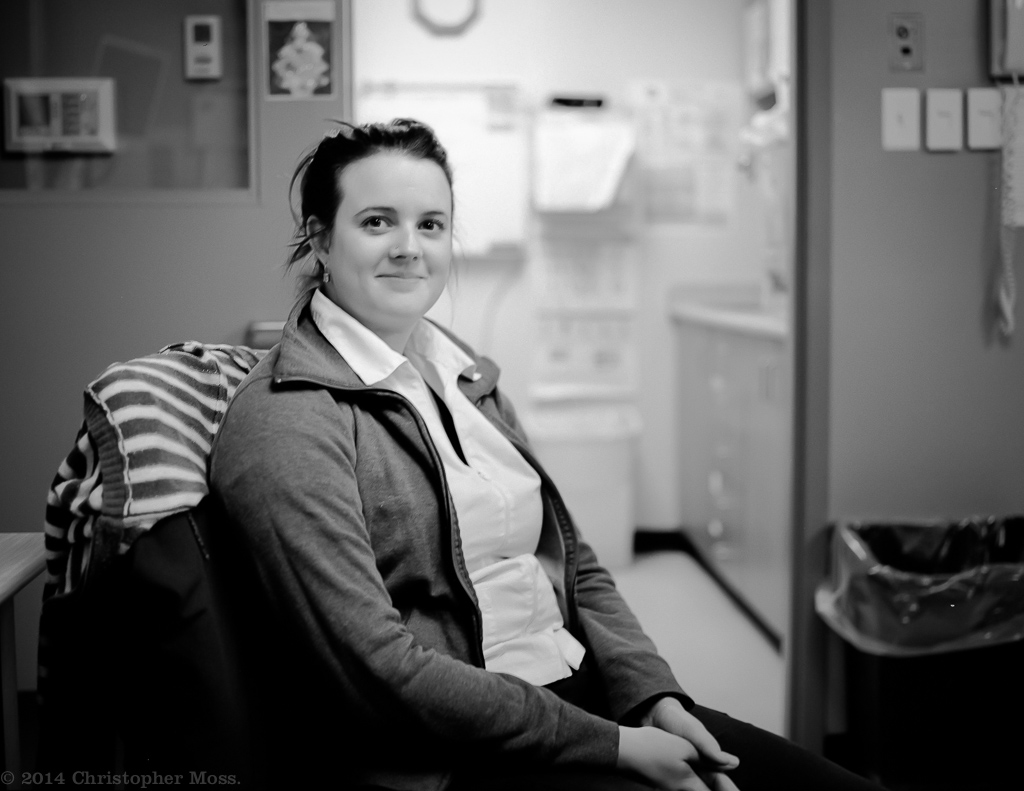
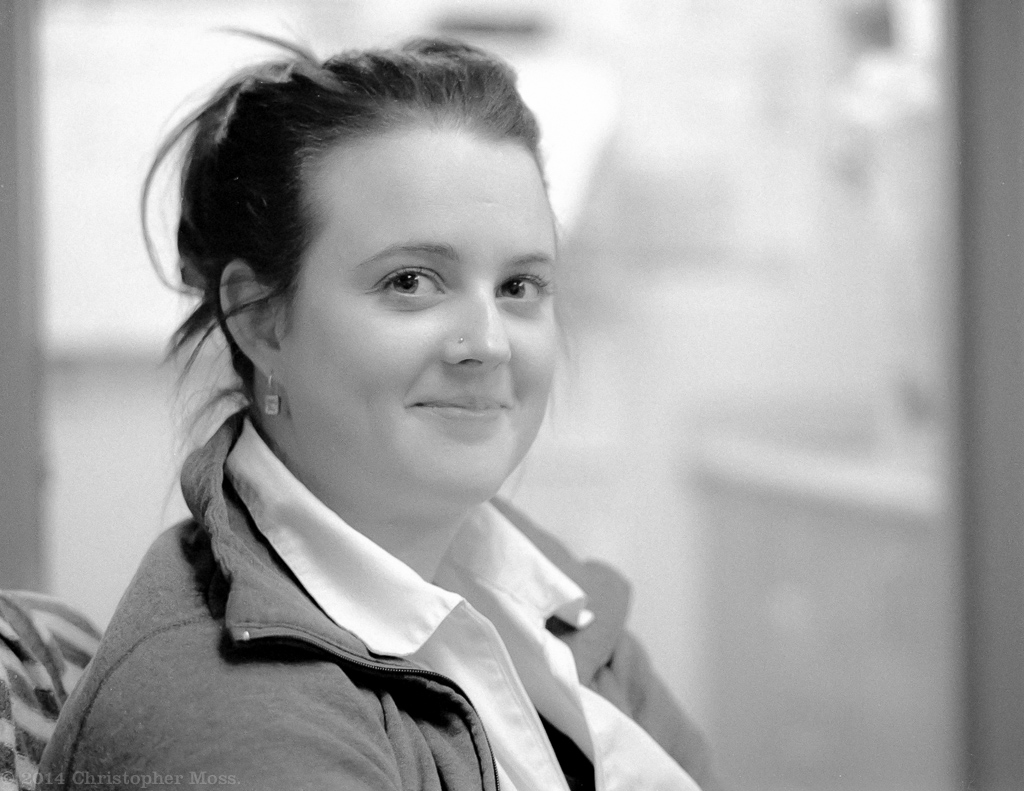

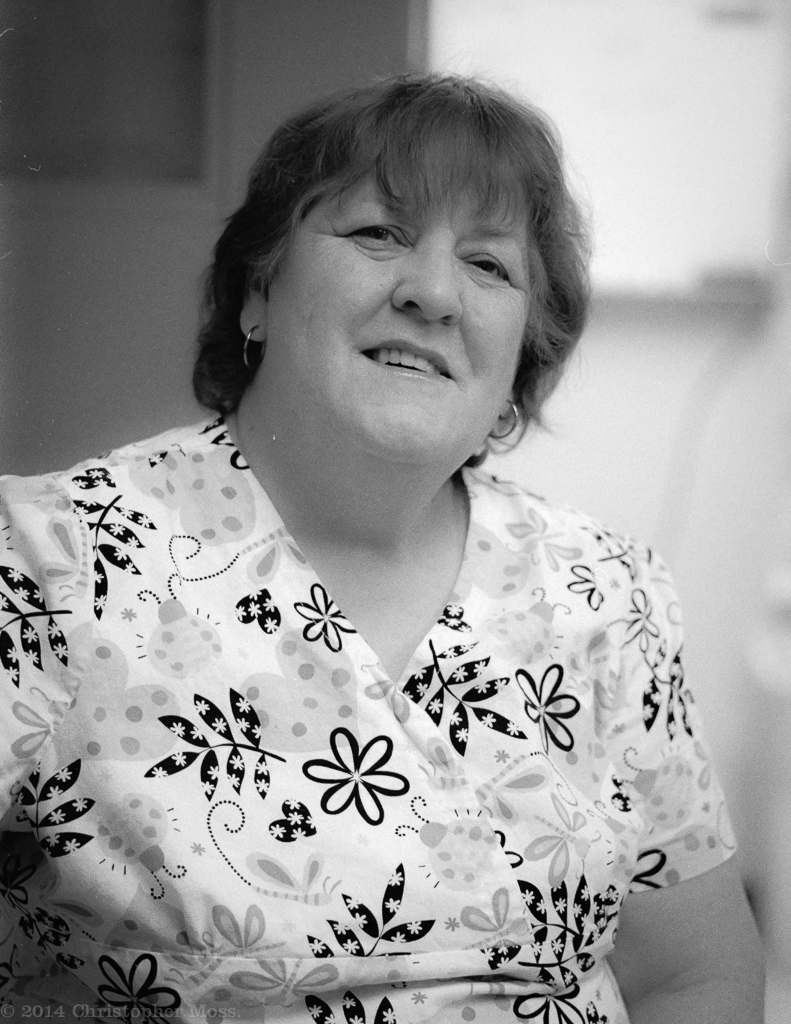

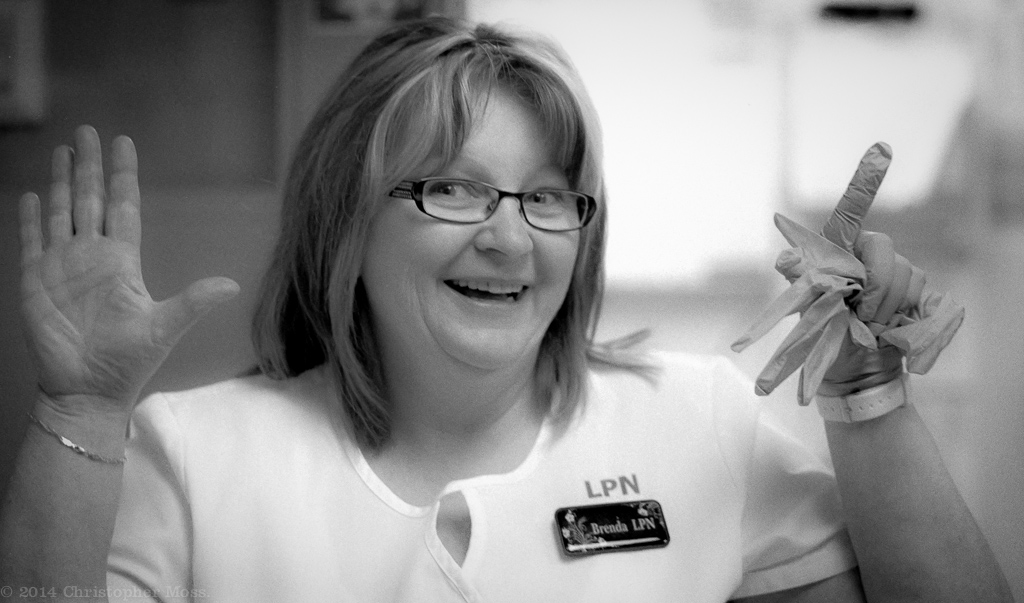


I do work with some lovely people! I think I shall have to explore this technique some more. Another developer that can be used this way is also sitting in my chemistry fridge - Kodak HC-110. I'd better get to know all the foibles of Rodinal/Blazinal first though. BTW, the developing reagent in it is 4-aminophenol, and it can be made at home with 30 Extra Strength Tylenol tablets, 50g sodium sulfite, 20g sodium hydroxide and 250ml water. It takes a week, but there will be enough 4-aminophenol released by then to use it exactly as the commercial concentrate after filtering out the tablet excipients. (Anything that will react with silver halides but not with metallic silver will make a developer. Lots of homebrew recipes use instant coffee and vitamin C.)
Chris










